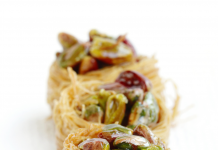Coffee beans are roasted using either a light or dark roast process. Each process removes differing amounts of oils, fats, and carbohydrates from the beans. This results in changes to the flavor and color of the coffee as well as its caffeine content. Here’s what you need to know about light-roasted coffee beans vs. dark-roasted coffee beans.
What is Coffee Bean Roasting?
Roasting is a process that transforms coffee beans into the brown, flavorful roasted coffee that we drink every day. The roasting process is critical to the quality of the product and is fundamental to the flavor profile, aroma, and type of yield.
The roasted coffee bean has a richer taste than its green counterpart. This is because oils are developed within each bean during roasting, giving it a more complex flavor. The darker the roast level, the stronger the flavor will be.
The Difference
Light Roasted Coffee Beans
Light roast coffees are sometimes referred to as American roasts or New England roasts. They have a lighter color than darker roasts and are typically marketed as having a more mellow flavor than darker roasted ones. Light roast coffees are often used in drip coffee makers because they will not burn as quickly as darker roast coffees do.
Dark Roasted Coffee Beans
Darker roasts have a deeper color than lighter roasts and may have a slightly bitter flavor when compared with lighter roasts. These types of coffees were traditionally used for espresso because of their ability to stand up to high temperatures without burning easily, like lighter roasts do.
Today, dark roasts are used for all types of brewing methods, including espresso machines and pour-over devices.
So, What is Medium Roast?
As you may be aware, medium roast coffee presents a happy medium between dark and light roasts. It is brown in color but not so dark that it loses the lighter floral and citrus notes that are common in light roasts.
If you can’t really decide between lighter and darker roasts, medium roast coffee is the perfect compromise.
What is Small Batch Roasting?
Small-batch roasters are companies that buy raw coffee beans from countries all over the world, roast them individually, and then sell them to customers directly at local markets, farmers markets, or online stores like Amazon.
Small-batch roasters often use organic ingredients and fresh water from mountain streams when making their coffee blends. These companies usually roast their own beans at home or in small commercial kitchens instead of using large machines found in regular coffee shops.
What are the Benefits of Small Batch Roasting?
Small-batch roasting ensures that every batch of coffee we roast is fresh and flavorful. These roasters don’t store their beans in warehouses or sell them after they’ve been sitting on a shelf for years.
Roast Tastes: Sweet vs. Bitter
Bitter
Some people enjoy the bitterness of coffee, while others find it off-putting. The reason behind this preference is organic acids—including trigonelline—that increase as beans heat up and also make light roasts bitter.
However, as the beans continue to roast and chlorogenic acids break apart, a bitter by-product is produced in dark roasts. Therefore, both light and dark roasts can be bitter, but for different reasons.
Sweet
When the roasters roast the coffee beans, the sugars naturally present in the beans burn. But because of this process, other sugars can also form in their place. This means that the rate at which the beans cool off can influence their natural sweetness. The faster they cool, the sweeter they will taste.
Types of Acids in Coffee
There are 9 different types of acids in coffee:
- chlorogenic
- acetic
- malic
- phosphoric
- quinic
- citric
- linoleic
- palmitic
- lactic
You might think that the less time a coffee bean is roasted, the less acidity it will have. But this isn’t always the case! Dark roasts and Arabica beans generally have a lower acidity level than their light or medium counterparts, so if you’re trying to watch your acid intake, go dark!
How does a Roaster Knows When Beans are Perfectly Roasted?
To roast the beans, a roastmaster first relies on a “recipe” or set of instructions. Next, they use sight and smell to determine when the beans are done. The colors are easy to see, but the slight variations in smell require experience.
The difference between a light roast and a dark roast is something only an experienced roastmaster can recognize. After the beans cool down, it’s very obvious to an experienced roastmaster which roasts are light, medium, or dark.
Conclusion
In summary, if you want espresso-robust flavor and less body, as well as that classic aroma of dark roasts, dark roast is the way to go; if you like a smoother, sweeter cup than the traditional dark roast has to offer, a light roast is for you.





